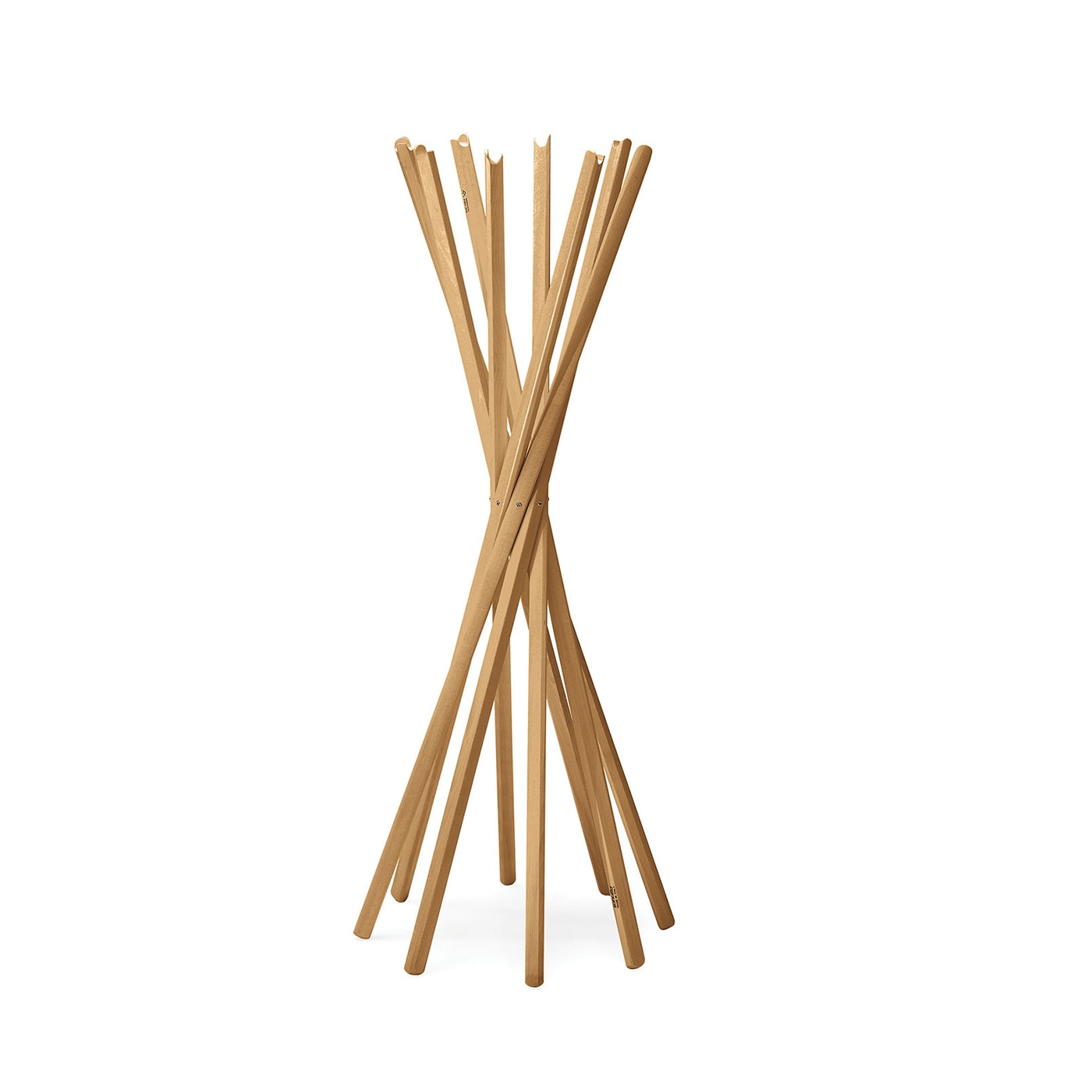Do you remember the game of shanghai, the famous pastime, of uncertain origin (actually, we don’t know if it really originated in the East: more likely it was invented in Europe), where you throw some colored sticks that must then be picked up one by one without the others being moved? Lo and behold: there is a famous designer coat rack that was precisely inspired by this game. It is the famous Sciangai, designed in 1973 by the DDL group (composed of Jonathan De Pas, Donato D’Urbino and Paolo Lomazzi), and produced starting in 1974 by the furniture company Zanotta. In those very years, the company, which manufactured sofas and armchairs, was diversifying its production and launched into the furniture accessories sector: Sciangai was precisely the first furniture piece produced by the Milanese company.
De Pas, D’Urbino and Lomazzi thought precisely of the game with the Chinese name when they designed their coat rack. “Objects must enter into a sympathetic relationship with those who use them and be easy to use,” Lomazzi declared in an interview with RAI. “Objects of daily use, domestic and may I say affectionate objects.” Here, then, is the reason for the board game inspiration.
In fact, Sciangai ’s structure is reminiscent of a network of eight crossed wooden slats, each five feet high, creating an open, geometric shape, and allows for easy hanging of clothes and accessories, while providing an aesthetically interesting and innovative solution for home decor, with an open, light, elegant and modern form. It is also a versatile item, since the slats are held together by a steel washer that allows the “sticks” of Sciangai to be moved as desired to create a shape that fits inside. Again, the inspiration comes from the gesture of the Shanghai player who, before throwing the sticks into the table, holds them in his own hand, and then tosses them as if to open a fan: even Sciangai, when closed, looks like a bunch of playing sticks (and is also space-saving and easily transportable). The principle is simple: the sticks rest directly on the ground, and at the top end they become like “hooks” on which to hang coats, hats, clothes. When it was presented in 1974, Domus magazine described it as “space-saving” and “suitable for entrances.” Simple definition, as simple as this little DDL masterpiece is.

 The
The The
The The
The Sciangai
Sciangai Sciangai
Sciangai Sciangai
SciangaiThe use of wood (over time, beech, oak, ash, and at first even linden were used), a durable and natural material, and distinctive design have made Sciangai a unique piece of furniture, valued for its functionality and style that combines aesthetics, functionality, and cultural inspiration, making it a distinctive piece in interior design and giving it a classic status. Because of its ease of use, versatility, and simple but ingenious and evocative concept , Sciangai was an immediate success, awarded the Compasso d’Oro in 1979 and the Bio9 Award of the Ljubljana Design Biennale in 1981, and entered the collections of the Triennale Design Museum in Milan, MoMA in New York, and several other institutions. Today it is made in different versions: it can be purchased in natural color or with different tints (black, gray, white). A 50th birthday version, Sciangai 50, was also made in 2023, with the eight slats all colored in bright pastel shades (red, yellow, light blue, orange, fuchsia, light blue, pink, and green).
Sciangai has endured over the years because it is a simple, transversal object: the coat rack by De Pas, D’Urbino and Lomazzi proved capable of transcending fashions and thus able to stand the test of time. Architect Giovanni Klaus Koenig was convinced of this: “I challenge anyone to design a simpler and better one, equally entertaining and with an image of the same strength.”
Warning: the translation into English of the original Italian article was created using automatic tools. We undertake to review all articles, but we do not guarantee the total absence of inaccuracies in the translation due to the program. You can find the original by clicking on the ITA button. If you find any mistake,please contact us.